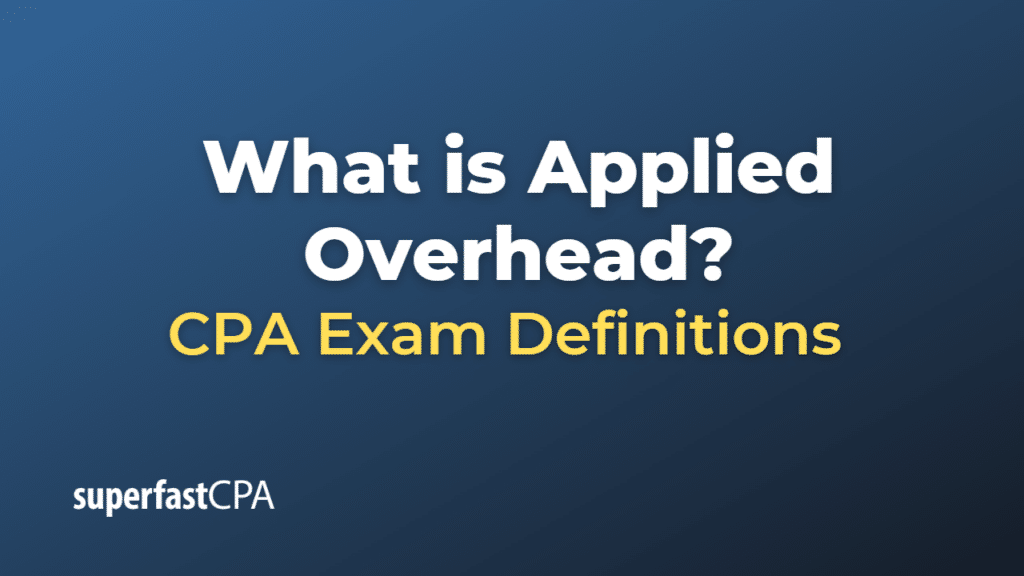Applied Overhead
Applied overhead refers to the portion of a company’s indirect costs or overhead costs that have been allocated to specific production activities or cost objects. Overhead costs are indirect costs that cannot be directly traced to the production of specific goods or services. Examples of overhead costs include rent, utilities, insurance, and depreciation.
The applied overhead is calculated by using an allocation base (also known as a cost driver) to distribute the overhead costs among different cost objects. Common allocation bases include direct labor hours, machine hours, or direct labor costs.
To calculate the applied overhead, you first determine the overhead allocation rate by dividing the total overhead costs by the total units of the allocation base:
Overhead Allocation Rate = Total Overhead Costs / Total Units of Allocation Base
Next, you apply the overhead allocation rate to each cost object based on its share of the allocation base:
Applied Overhead = Overhead Allocation Rate × Allocation Base for the Cost Object
The applied overhead provides a basis for assigning indirect costs to products, services, or departments, which helps in more accurate product costing, pricing decisions, and performance evaluation.
Example of Applied Overhead
Let’s say a small manufacturing company produces two types of widgets: Widget A and Widget B. The company has determined that its total overhead costs for the month are $100,000, and it has decided to use machine hours as the allocation base for distributing these overhead costs.
During the month, the company used 10,000 machine hours to produce the widgets, with Widget A consuming 6,000 machine hours and Widget B consuming 4,000 machine hours.
First, we need to calculate the overhead allocation rate:
Overhead Allocation Rate = Total Overhead Costs / Total Units of Allocation Base Overhead Allocation Rate = $100,000 / 10,000 machine hours Overhead Allocation Rate = $10 per machine hour
Now, we can apply the overhead allocation rate to each type of widget based on its share of the machine hours:
Applied Overhead for Widget A = Overhead Allocation Rate × Allocation Base for Widget A Applied Overhead for Widget A = $10 per machine hour × 6,000 machine hours Applied Overhead for Widget A = $60,000
Applied Overhead for Widget B = Overhead Allocation Rate × Allocation Base for Widget B Applied Overhead for Widget B = $10 per machine hour × 4,000 machine hours Applied Overhead for Widget B = $40,000
By using applied overhead, the company can now allocate $60,000 of its overhead costs to Widget A and $40,000 of its overhead costs to Widget B. This helps the company to more accurately determine the cost of producing each type of widget and make better decisions about pricing and resource allocation.













